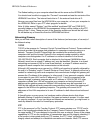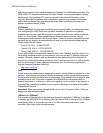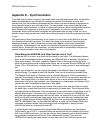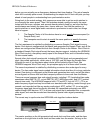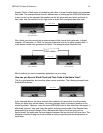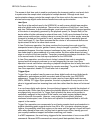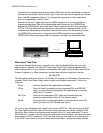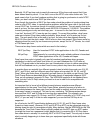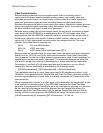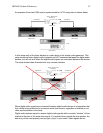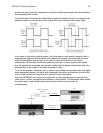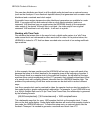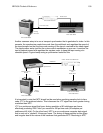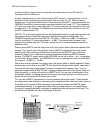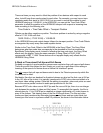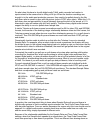HD24/96 Technical Reference 96
Video Synchronization
Because analog systems do not have sample clocks, video is commonly used to
synchronize the transport speed of multiple analog systems, most notably video tape
machines and synchronizers. In a typical setup, a device called the “master house sync
generator” generates a highly accurate and stable blackburst video signal which is
distributed throughout the facility to every device that needs it. Blackburst is simply a normal
picture-carrying video signal (composite video) that contains “black” as its picture. When a
device is locked to house sync it is said to be “genlocked”.
Because analog systems do not have sample clocks, the only way to synchronize a digital
audio device like the HDR24/96 to an analog device like a VTR is through video. Many
digital systems, like the HDR24/96, support the ability to synchronize their sample clock to
blackburst or composite video signals. Unlike word clock however, video is not a “clock”
signal at all. In fact, video signals run much slower than sample clocks do. The three
standard Video Field Rates in use today are:
50 Hz PAL and SECAM video.
59.94 Hz NTSC color video.
60 Hz NTSC black & white video and some HDTV.
Because there are two video fields for every video frame, the video frame rates correspond
exactly to 25 Hz, 29.97 Hz, and 30 Hz, which are also standard Time Code Frame Rates.
How convenient! In order for a digital system to synchronize to video, it must “synthesize” its
sample clock from the much slower video signal. The relationship between the video field
rate and the sample rate of the box is determined by a simple mathematical relationship.
For example, if you have a 50 Hz video signal and want the device to run at a 48 kHz
sample rate, then the relationship is determined by the following formula:
[48,000 samples/sec] / [50 frames/second] = 960 samples/frame
This relationship says that for every video frame exactly 960 samples are clocked. In the
HDR24/96, this is governed by the Sample Rate and Video Field Rate parameter settings. If
the video signal speeds up or slows down, the sample rate speeds up or slows down in the
same proportion.
When a sample clock is locked to a video signal in this relationship, the sample clock is said
to be “resolved” to the video signal. In the HDR24/96, always set the Video Field Rate
parameter to correspond to the actual field rate of the video you are resolving to. If you don’t
do this, then the actual sample rate will be different from the Sample Rate setting. For
example if the Video Field Rate setting is 60 Hz, and the Sample Rate setting is 48 kHz,
feeding a 59.94 Hz video signal into the HDR24/96 will cause the sample clock to run at
[(48,000 samples/sec)/(60 frames/sec)](59.94 frames/sec) = 47,952 Hz.



